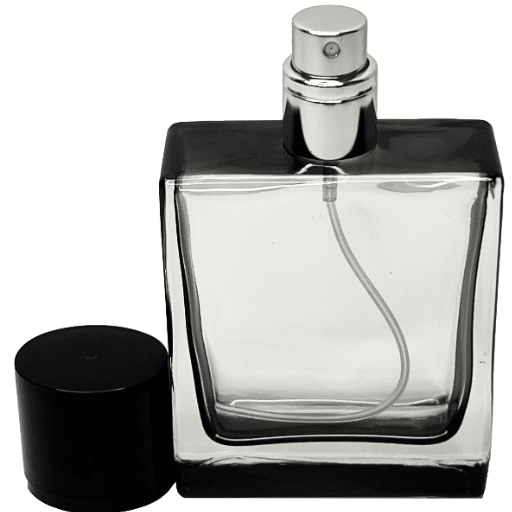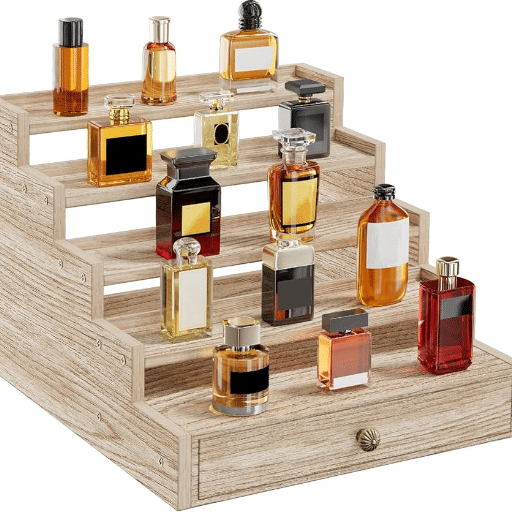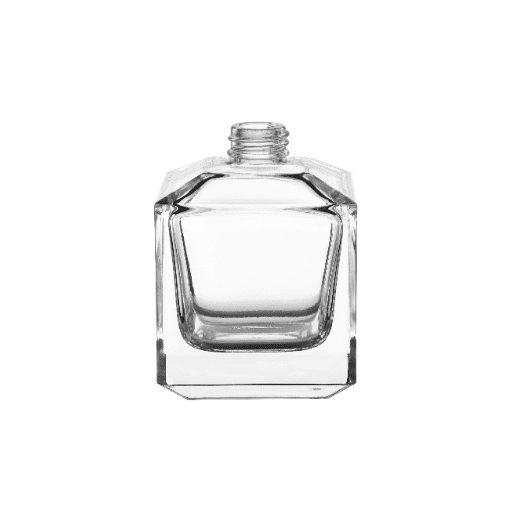The perfume spray nozzle, while seemingly small and discreet, plays a significant role in dispensing the perfect spritz of fragrance. Its purpose is to allow for fine distribution while being an influencer in the larger perfume experience-the nozzle is an elaborate mechanism which combines engineering with design. This article delves into the captivating world of perfume spray nozzles, examining their types, functionalities, and the best way to select one that suits your fragrance product. Be you a perfumer, a packaging designer, or just an instance inquirer curious about the science behind their chosen scent, this article will provide a thorough, well-etched understanding of this facility yet often neglected element.
Introduction to Perfume Spray Nozzles
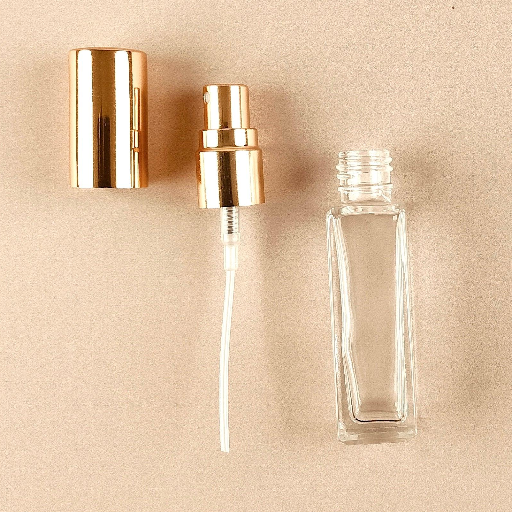
Perfume spray nozzles are components specially designed to disperse a fantastic mist of fragrance out of a bottle. They work by using pressure to atomize the liquid, forming fine droplets for efficient and even application. A spray nozzle enhances the application experience by delivering the fragrance uniformly, ensuring it is not wasted and remains true to its original scent. Therefore, spray nozzles constitute the very foundation of the application process in any perfume product. Their design and quality are crucial considerations in perfume packaging.
What is a Perfume Spray Nozzle?
A perfume spray nozzle is a precisely engineered device designed to spray liquid perfumes in the form of a fine mist. It comprises several key elements, such as an actuator, a valve, and a dip tube, that work together to ensure its proper functioning. The nozzle operates on the principle of fluid dynamics: pressure is used to atomize the liquid into microscopic droplets, enabling an even dispersion of the fragrance. Current search data suggest a trend towards consumers prioritizing spray nozzles with adjustable spray patterns or improved atomization for more refined fragrance delivery. This technology ensures the best use expectancy while preserving the constitution of odors by limiting their exposure to air and contaminants. The quality and precision of the spray nozzle are crucial, as they affect both the performance of the product and the user’s satisfaction.
Importance of Nozzle Design in Perfume Bottles
The nozzle design in perfume bottles plays a crucial role in the overall functionality and quality of the perfume. A nozzle is specially engineered to regulate the dispersion of the fragrance, resulting in a consistent and delicate mist. Well-designed nozzles maximize the time perfume molecules stay in the air and minimize the wastage of the perfume. Furthermore, advanced nozzle designs frequently utilize anti-leak and clogging mechanisms, which are necessary for maintaining the integrity of the fragrance over time.
From the perspective of modern advancements in nozzle technology, the primary goal is to enhance atomization. Atomization breaks the liquid up into an even spray for optimal pleasure and great coverage, while preserving the fragrance from contaminants. Also important will be the ergonomics of the nozzle, which optimizes ease of use from the consumer’s perspective in application.
By combining innovative materials with state-of-the-art engineering, the perfume bottle nozzle design ensures long-term quality, user satisfaction, and consistent performance.
Overview of Different Types of Spray Nozzles
There are several types of perfume spray nozzles, including fine mist nozzles, crimp-on nozzles, screw-on nozzles, pump spray nozzles, and actuator nozzles, each serving specific design and functional requirements.
| Nozzle Type | Function | Key Feature | Use Case | Material |
|---|---|---|---|---|
| Fine Mist | Even mist | Precise coverage | Everyday application | Plastic/Metal |
| Crimp-On | Airtight seal | Secure design | Luxury packaging | Aluminum/Steel |
| Screw-On | Easy refill | Reusable | Travel-friendly | Plastic/Metal |
| Pump Spray | Controlled flow | Adjustable output | Custom fragrances | Plastic |
| Actuator | Precise control | User-friendly | Broad applications | Metal/Plastic |
Functionality of Perfume Spray Nozzles
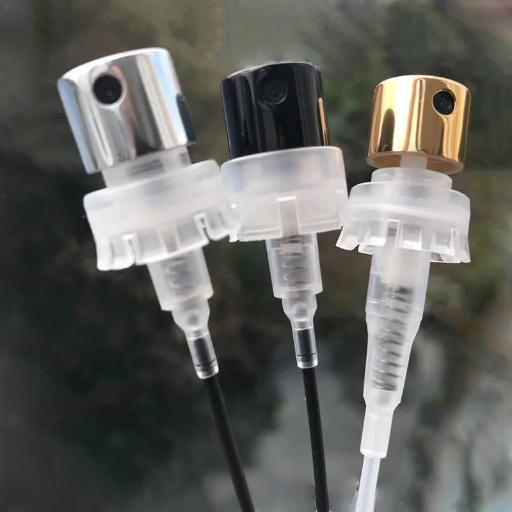
Perfume spray nozzles are designed to ensure that the optimal amount of fragrance is dispensed for both functional and aesthetic purposes. The actual working of the nozzles involves atomization, in which the liquid perfume is broken down into very fine particles, forming a uniform mist. Depending on the type of nozzle, features may include exact flow control, allowing for easy refilling, or an airtight seal, which enhances the ease of application. For instance, a fine mist nozzle would be considered ideal for daily use, given its uniform coverage. In contrast, a crimp-on nozzle ensures an airtight seal to the product, retaining it within a luxury package. Each type of nozzle is scientifically designed to meet specific requirements, striking a balance between engineering and convenience.
How Spray Nozzles Control the Dispersion of Fragrance
The spray nozzles control fragrance dispersion by regulating flow rate, droplet size, and spray pattern to achieve optimal results with uniform coverage of the application. These nozzles are equipped with precision-engineered parts, such as orifices and swirl chambers, which break the liquid into finer droplets through atomization or pressure-induced turbulence. Depending on the pressure with which it is applied to the liquid, the type of nozzle determines the droplet size and the range to which the spray is made, optimizing coverage and user experience. Additionally, the angle of incidence on the nozzles, as well as the geometry of the sprays, must be aligned to achieve specific dispersion profiles, ranging from fine mist to direct stream. This delicate balance of design is a deciding function, preserving the product, and satisfying the user, to answer diverse needs concerning fragrance application.
The Mechanism Behind Fine Mist Production
It involves hydraulic or air-assisted atomization, where the liquid is forced through a precision-engineered nozzle at high pressure. Shear forces act to shatter the liquid into tiny droplets, thus generating the mist. The size and shape of the nozzles’ orifices determine droplet size and spray distribution. Modern misting systems often employ modern materials and microfluidic-based designs to ensure high reliability and efficiency. The dynamic interplay within liquid and air flows terminates in the generation of a counterfeit, ideally distributed spray suitable for controlled dispersive applications.
Common Features of Spray Pumps and Atomizers
- Adjustable Spray Patterns – Most spray pumps and atomizers allow users to adjust spray patterns, ranging from fine mists to direct streams, according to specific application needs.
- Precision Nozzles – These devices are equipped with precision-engineered nozzles that ensure even droplet distribution and controlled volume for consistent performance.
- Durable Materials – Made of corrosion-resistant materials, these spray pumps and atomizers are designed to withstand a wide array of environmental conditions and exposure to various substances.
- Ease of Operation – These devices are relatively easy to operate with user-friendly mechanisms including trigger systems or pressure pumps that provide excellent control over the sprayed material.
- Sealing and Leak Prevention – Leak-proof seals maintain high pressure, ensuring the efficient use of liquids that would otherwise be wasted in professional and industrial set-ups.
Materials and Manufacturing Process

Perfume spray nozzle materials are typically of high quality, thereby conferring upon them the qualities of durability, functionality, and resistance to chemical reactions with the liquids they dispense. For example, stainless steel is primarily used due to its resistance to corrosion. High-quality plastics, such as polypropylene (PP) or polyethylene (PE), are lightweight yet sturdy. Nitrile or silicone are used as gaskets and seals to prevent leaks.
The manufacturing processes are precision molding of plastic parts with dimensional consistency, while metal parts are stamped, machined, and polished to ensure smooth surfaces and proper alignment. Generally, assembly is automated and uses advanced methods to integrate components such as the nozzle head, actuator, and sealing mechanism. Furthermore, throughout the entire process, rigorous quality control is applied to ensure that the spray nozzles are functional, precise, and suitable for various perfume formulations in diverse applications.
Common Materials Used in Perfume Spray Nozzles
Perfume spray nozzles are typically made from a mix of materials, carefully selected to ensure durability, precise fastening, and resistance to chemical interactions with specific perfume formulations. Commonly used materials include:
- Plastics (Polypropylene, Polyethylene): Plastics are widely used due to their corrosion resistance, lightweight nature, and economic benefits. High-quality plastics with resistance to alcohol or oil-based formulations are also accepted.
- Metals (Stainless Steel, Aluminum): Metal parts provide a degree of structural integrity and a very smooth actuation experience, with stainless steel in particular being impervious to rust and corrosion, making it suitable for prolonged use and interaction with substances that can be volatile.
- Elastomers (Silicone, TPE): They are included in the elastomer components as gaskets or O-rings to establish tight seals and prevent leaks. Silicone elastomers are suitable choices due to their flexibility and resistance to degradation by fragrance oils and alcohol.
- Glass (for hybrid designs): Rare and very expensive nozzles will incorporate glass elements to enhance aesthetic appeal whilst maintaining the non-reactive nature of the material to ensure product purity.
The blend of these materials enables manufacturers to achieve key operational functions, such as providing a fine mist spray and resistance to environmental impacts. Most recent developments, however, are geared toward sustainable materials with the development of biodegradable plastics and recyclable components.
Technological Advancements in Spray Nozzle Production
Through recent innovations in perfume spray nozzle production, function, precision, and sustainability have seen a drastic transformation. These production methods now employ micro-engineering in the nozzle design, producing a consistent ultra-fine mist that maximizes user experience through precise application with minimal wastage. Additionally, extensive research has been conducted on green materials, including biodegradable plastics and recyclable components, ensuring that the production of nozzles aligns with global sustainability initiatives. Advanced computational modeling and testing of nozzle aperture sizes and pressure systems help to reduce failures and improve product performance. It marks a significant step forward in addressing technological advances and environmental concerns within the industry.
Quality Control in Manufacturing Nozzles
Quality control execution for perfume nozzle manufacturing is a meticulous process aimed at achieving precision, durability, and consistent performance. Key aspects include inspections that verify dimensional accuracies using high-technology measuring instruments, such as coordinate measuring machines (CMMs), to confirm nozzle aperture sizes and flow rates. Tests on material integrity ensure the prevention of incompatibility with perfumes from degradation or chemical reaction. These are automatically tested to replicate normal usage in nozzle dispersion patterns with consistent atomization. The ISO 9001 standard is followed by the manufacturer, along with the Lean Six Sigma methodology, to continually improve processes, reduce defects, and maintain efficiency. These ensure the manufacturing of nozzles that meet the quality requirements of the end-user, as well as industrial standards.
Common Issues and Solutions
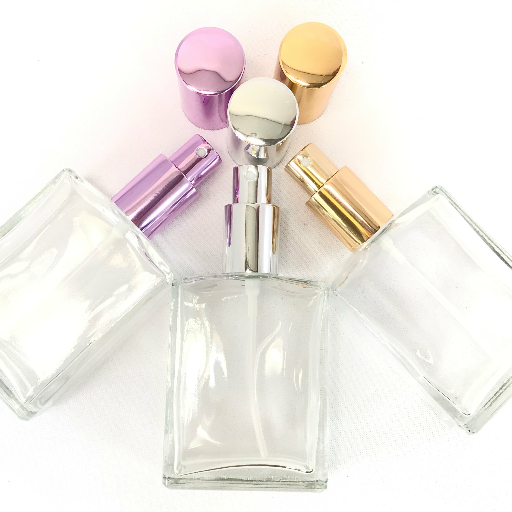
Problem: A spray nozzle may become clogged due to residue buildup from perfume oils or other ingredients.
Occasionally, wipe the nozzle with warm water or a mild cleaning solution, and always store the perfume bottle with the cap tightly screwed on.
Problem: The spray patterns can become uneven if the nozzle is damaged or misaligned.
Check if the nozzle opening is damaged and replace the nozzle if need be. Make sure that the bottle is kept upright while using.
Problem: Leakage mostly occurs due to a faulty seal or improperly assembled parts of the nozzle.
Tighten the nozzle and check if the seal is worn out, so the leak stops. When necessary, replace the faulty parts.
Problem: Reduced spray pressure may arise due to low air pressure inside the bottle or a partially clogged nozzle.
Ensure there is sufficient liquid in the bottle and that the nozzle is clear. If cleaning does not help, replace the nozzle.
These simple maintenance and replacement steps can help users resolve common problems and extend the lifespan of their perfume spray nozzles, ensuring continued optimal performance.
Dealing with Clogging in Spray Nozzles
Whenever I am dealing with clogged spray nozzles, the first thing I try to inspect is if there is any kind of visible residue around the neck of the nozzle as build-up can block proper flow since I then wash it off with warm water or use mild cleaning solutions, keeping in mind not to damage the nozzle opening. If the clogging persists, I remove the nozzle and soak it in a mixture of water and mild detergent to break down any stubborn residue. I then reattach it and test its functionality. If cleaning does not resolve the issue, the best and fastest solution is to replace the nozzle with a compatible one. Frequent cleaning and maintenance should help to avert future problems.
Fixing an Uneven Spray from Your Perfume Bottle
Ensure the nozzle is securely fitted and properly aligned. Check for dirt or blockages in the nozzle and clean it gently with a pin if necessary, or rinse with warm water. Should the problems persist, check the tube inside the bottle to ensure it is not bent or disconnected; correctly assembling the nozzle again often resolves the issue. If these things do not solve the problem, then it is time to replace the nozzle with a compatible one. Regular maintenance will help prevent such inconsistencies from reappearing.
When to Consider Nozzle Replacement
When I notice that the nozzle cleaning and reassembly do not work or enable the spray to retain its inconsistency, I would look at the nozzle replacement. Besides that, if visible wear and tear present themselves that cannot be resolved with cleaning or physical damage, then it will be more practical and efficient to replace it. A high-grade, complimentary replacement will ensure balanced working and a longer lifespan.
Choosing the Right Perfume Spray Nozzle
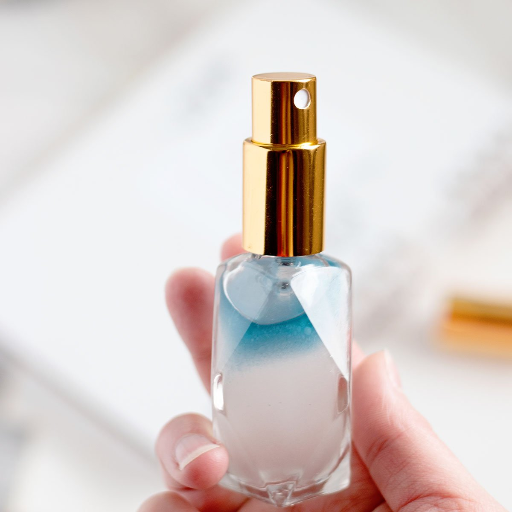
When choosing a perfume spray nozzle, several factors must be considered to ensure functionality and compatibility. Start by determining the bottle size and threading to ensure a perfect fit of the nozzle. Then, the spray pattern and atomization quality should be considered—a fine mist is preferred for evenness and a pleasant application. One must also consider the durability of the material since constant use and contact with certain liquids may eliminate the performance of lower-quality nozzles. Lastly, buy from trustworthy manufacturers to have one guarantee of its continuous performance and durability. These few factors combine to form a suitable choice for the nozzle, meeting both the practical and aesthetic aspects of the application.
Factors to Consider Based on Fragrance Type
- Viscosity of the Fragrance – Consider whether the nozzle is capable of ejecting a given fragrance based on its viscosity. Thick or oil-based fragrances occasionally require nozzles that promote higher flow rates or larger orifices to atomize smoothly.
- Specific Volatility and Alcohol Content – Fragrances with a higher alcohol content or higher volatility require a nozzle with precise controls to prevent excessive loss during application.
- Desired Spray Pattern – Whether it is an extra-fine mist, a concentrated stream, or a wider spray that suits the intended use of the fragrance, one must consider this when selecting a nozzle with the correct geometry and spray angle.
- Bottle Compatibility – Ensure the nozzle fits the bottle type and neck size to attach securely without leakage or improper sealing during use.
- Sensory Experience – The special nozzle should enhance the user experience by providing a consistent and even spray, in line with the concept of the fragrance’s sensory profile and intended method of application.
Compatibility with Refillable Spray Bottles
Refillable perfume spray bottles are combining sustainability and convenience with the compatibility of various nozzle types. Here, the nozzle must fit the refill mechanism for it to work correctly; it can be either a press-to-fill system or a screw-on type design, depending on the bottle model. Most refillable bottles are made of sturdy materials to experiment with ill-advised applications over and over again and therefore avoid leakage or deterioration associated with the materials. The other parameter for nozzle and bottle design compatibility is dimensional aspects, such as the stem length or diameter of the nozzle, ensuring they can run together smoothly and atomize the fragrance properly. An end-user should ensure that their refillable bottle follows industry standards for fitting and robustness to establish a longer association.
Reference Sources
-
Exploring Different Types of Perfume Sprayers and Their Applications – A detailed guide on various types of perfume sprayers and their uses.
-
Types of Perfume Bottle Nozzles: Which One is Best for Your Fragrance – Discusses different nozzle types, including atomizer spray nozzles and their benefits.
-
Understanding the Perfume Nozzle: Types and Functions – Explains the types of perfume nozzles and their specific functionalities.
-
Exploring the Parts of a Perfume Bottle: A Detailed Guide – Covers the components of perfume bottles, including atomizers and their unique roles.
Frequently Asked Questions (FAQs)
What is a perfume spray nozzle, and how does it work?
A perfume spray nozzle is a device affixed to perfume bottles that dispenses fragrance in a controlled manner. By creating a fine mist or a concentrated spray of the liquid perfume, the nozzle ensures that the perfume is applied evenly and consistently. So, a nozzle atomizes the perfume, allowing it to be used in a fine mist that enhances the fragrance.
How do you fix a perfume bottle with a broken nozzle?
Perfume bottles with broken sprays can often have their nozzles replaced or cleaned to restore functionality. Check if there is any clog or residue that might be stopping the spray. If cleaning does not work, then try to get a replacement spray nozzle that fits the bottle.
What are the different types of perfume spray nozzles?
There are various types of perfume spray nozzles, including atomizers, fine mist nozzles, and pump sprays. Each nozzle essentially creates its own spray pattern. Consequently, one can select the option that best suits their preference for the fragrance’s application. Some styles are better suited for spot application, while others produce an even mist.
How to Select a Nozzle for a Perfume Bottle?
Choosing the proper nozzle depends on the character of the perfume and how it is intended to be dispensed. A spray nozzle is typically selected based on the desired spray pattern, the volume of liquid to be dispensed, and the design of the bottle containing the perfume that requires dispensing. An ideal nozzle ensures perfume dispenses evenly and effectively.
What do you do when the spray bottle is clogged?
Some spray bottles get clogged. What you could do is take off their spray nozzles and rinse them with warm water. Alternatively, soak them in alcohol to dissolve any remaining residue. Sometimes, the nozzle needs to be replaced for it to work more efficiently.
Does a perfume atomizer emit one or more spray patterns?
Yes, different atomizers may generate different spray patterns: some may produce a fine mist, whereas others may provide a heavier spray. The spray head and nozzle design dictate how the fragrance is released, giving the option to atomize according to user preferences.
What is the proper way to clean a perfume spray nozzle?
The best way to clean the perfume spray nozzle is to remove it from the bottle and rinse it under warm water. If residues are tight, soak the nozzle in a water-alcohol solution. Ensure that all parts dry thoroughly before reassembling to prevent the fragrance from being compromised.

